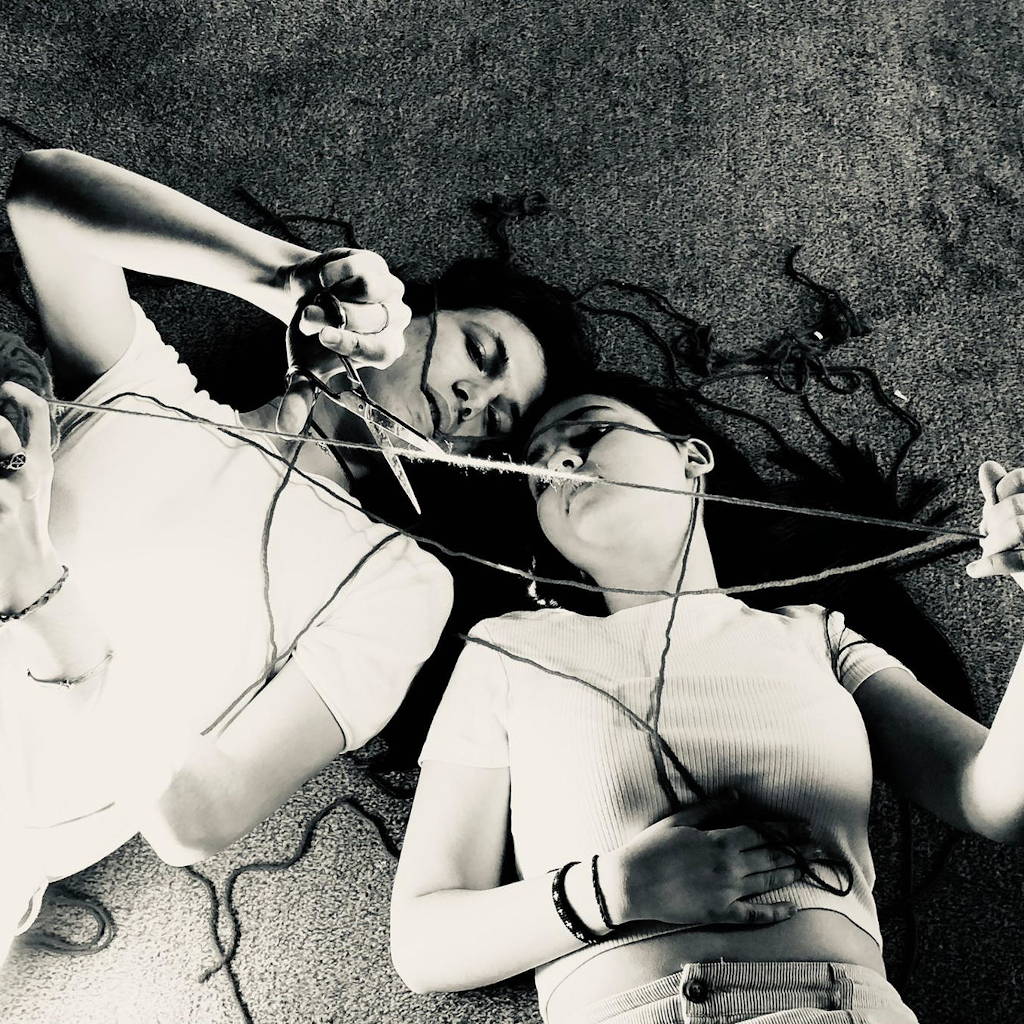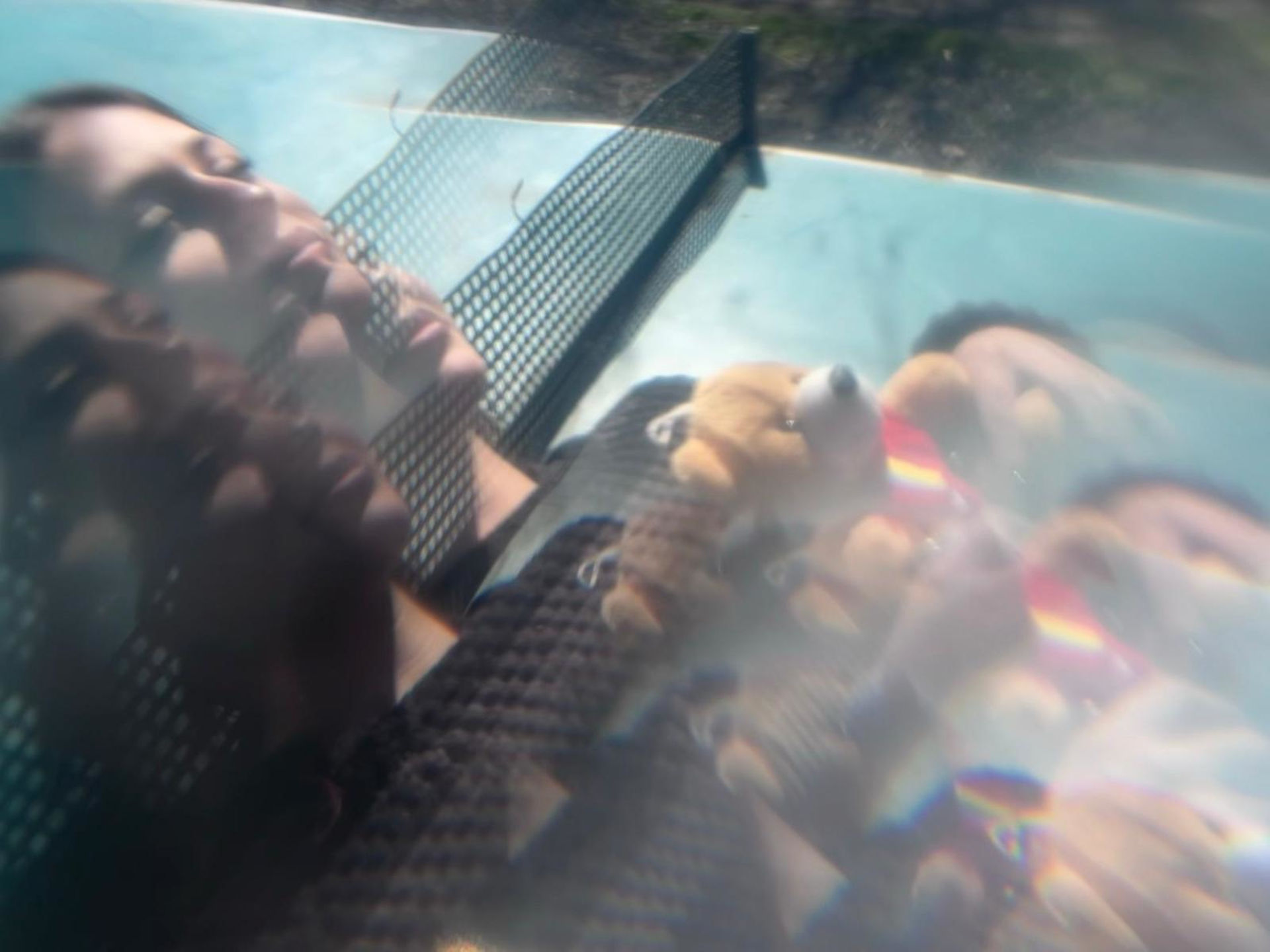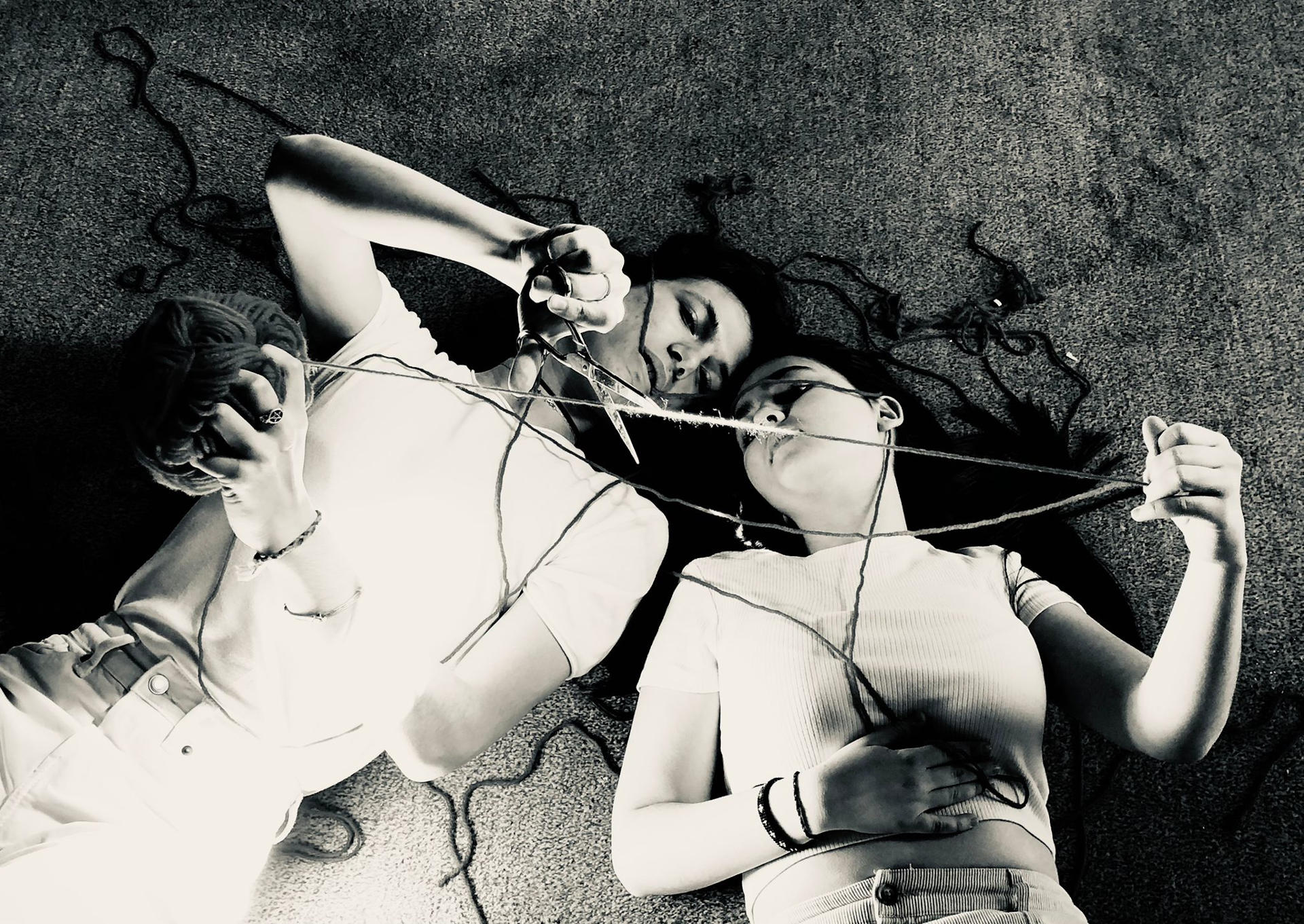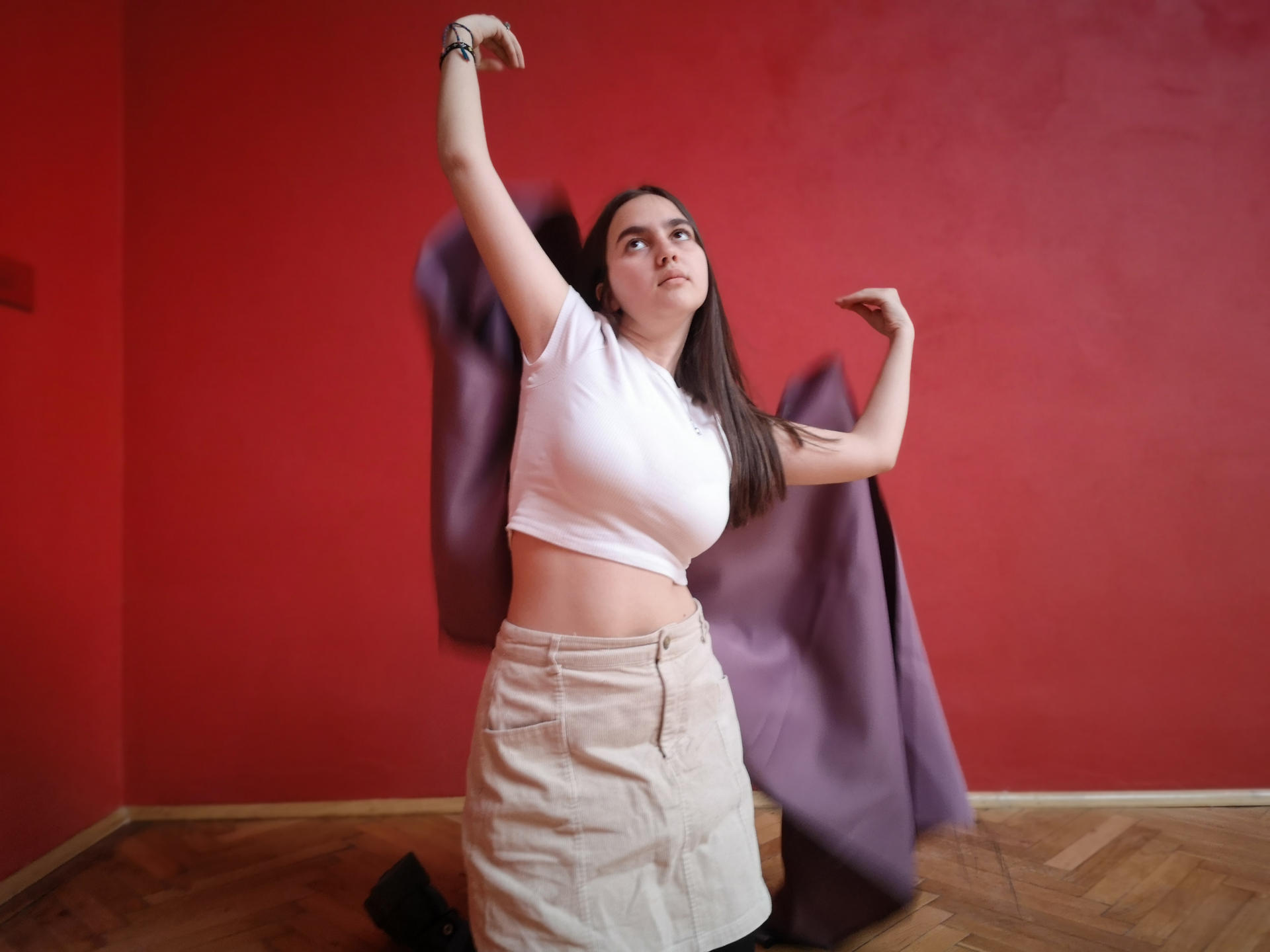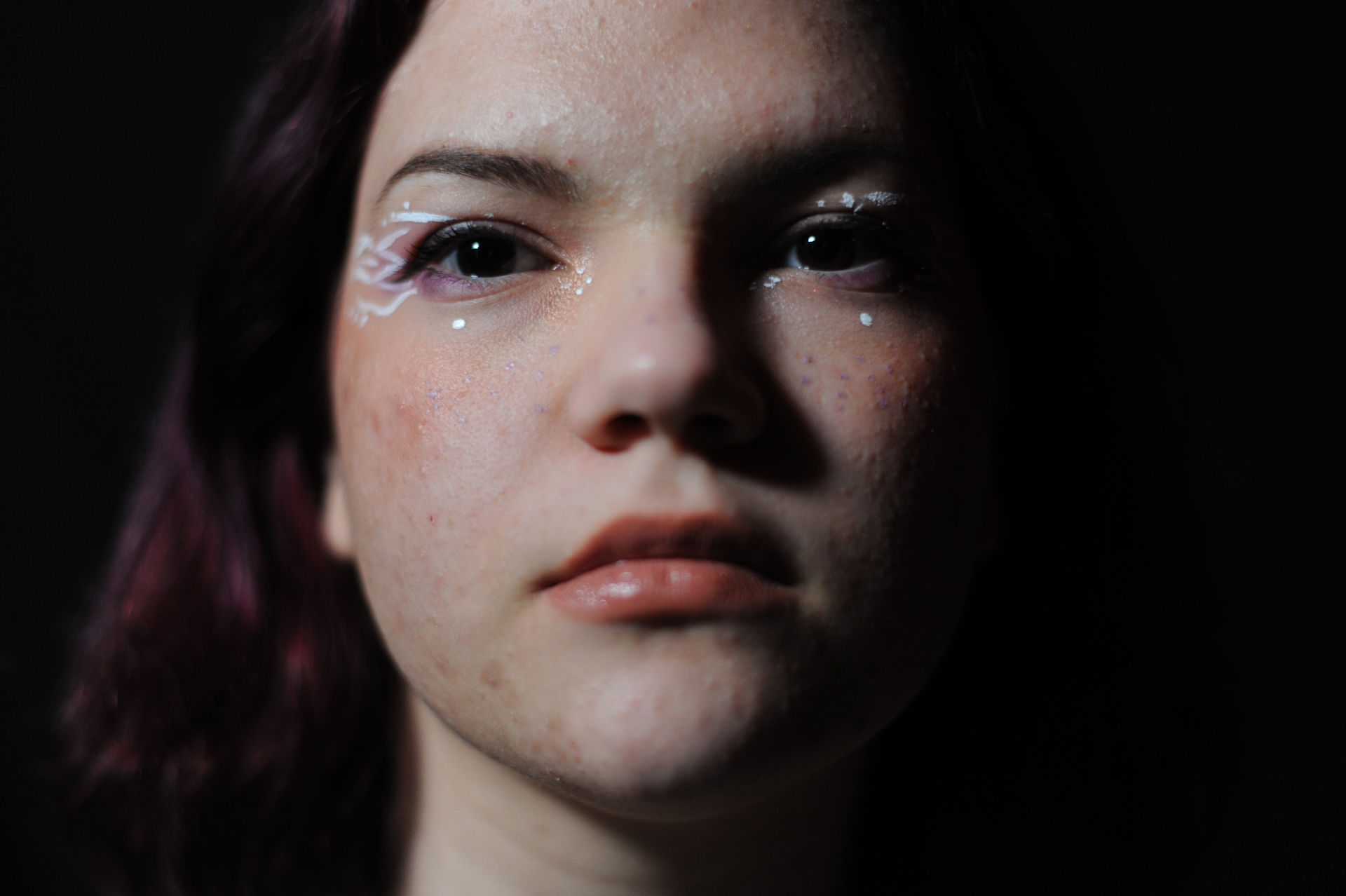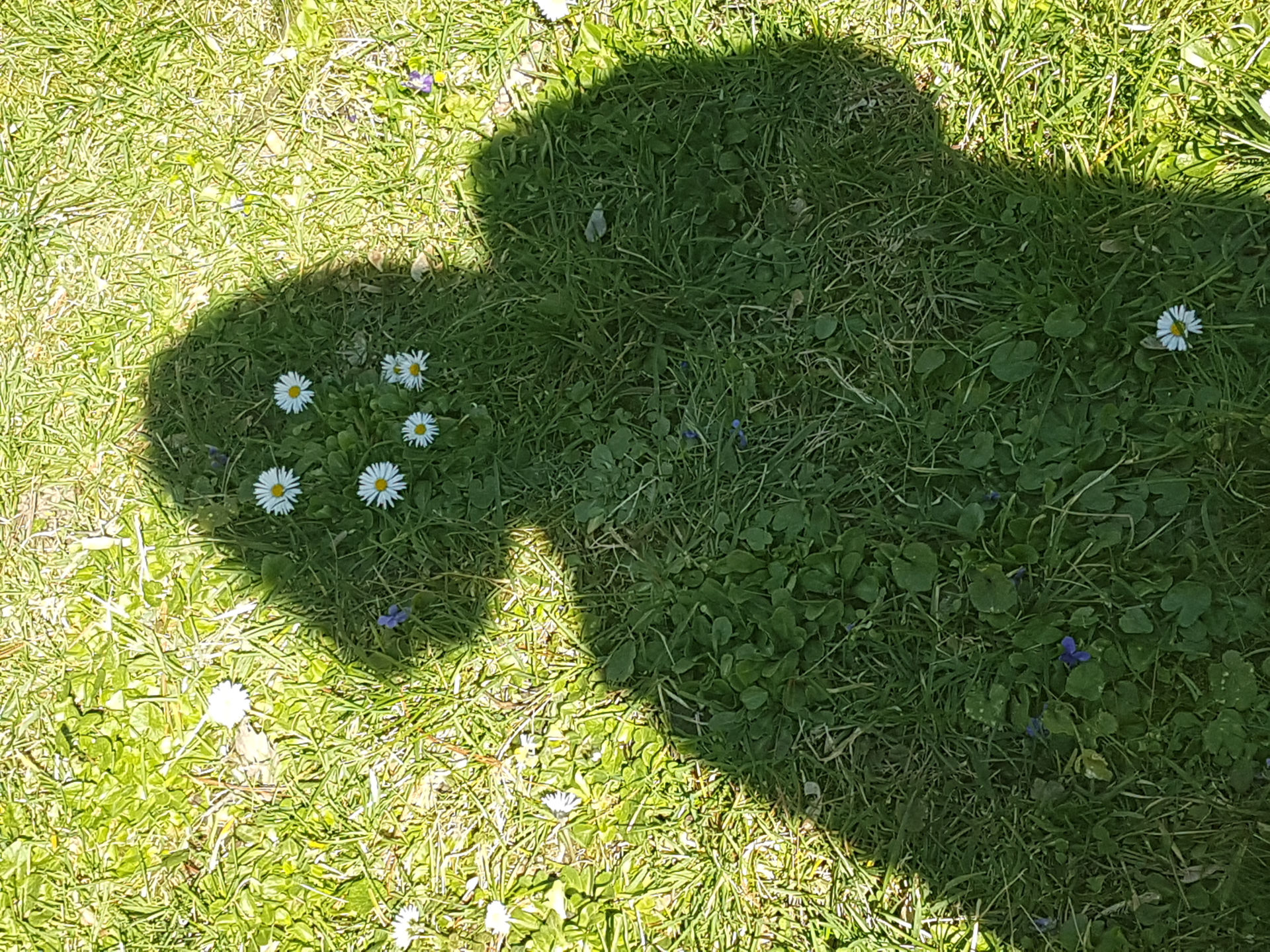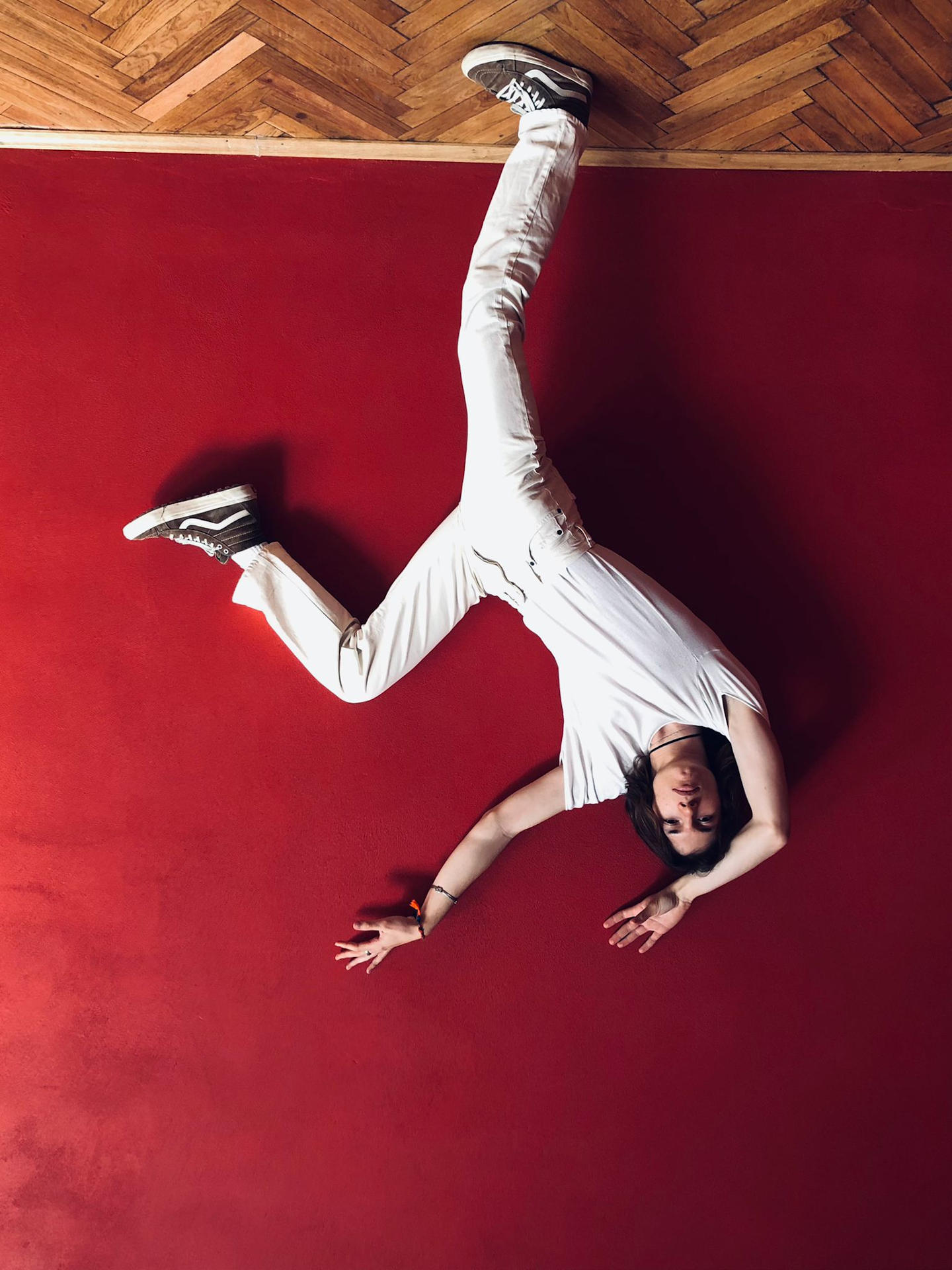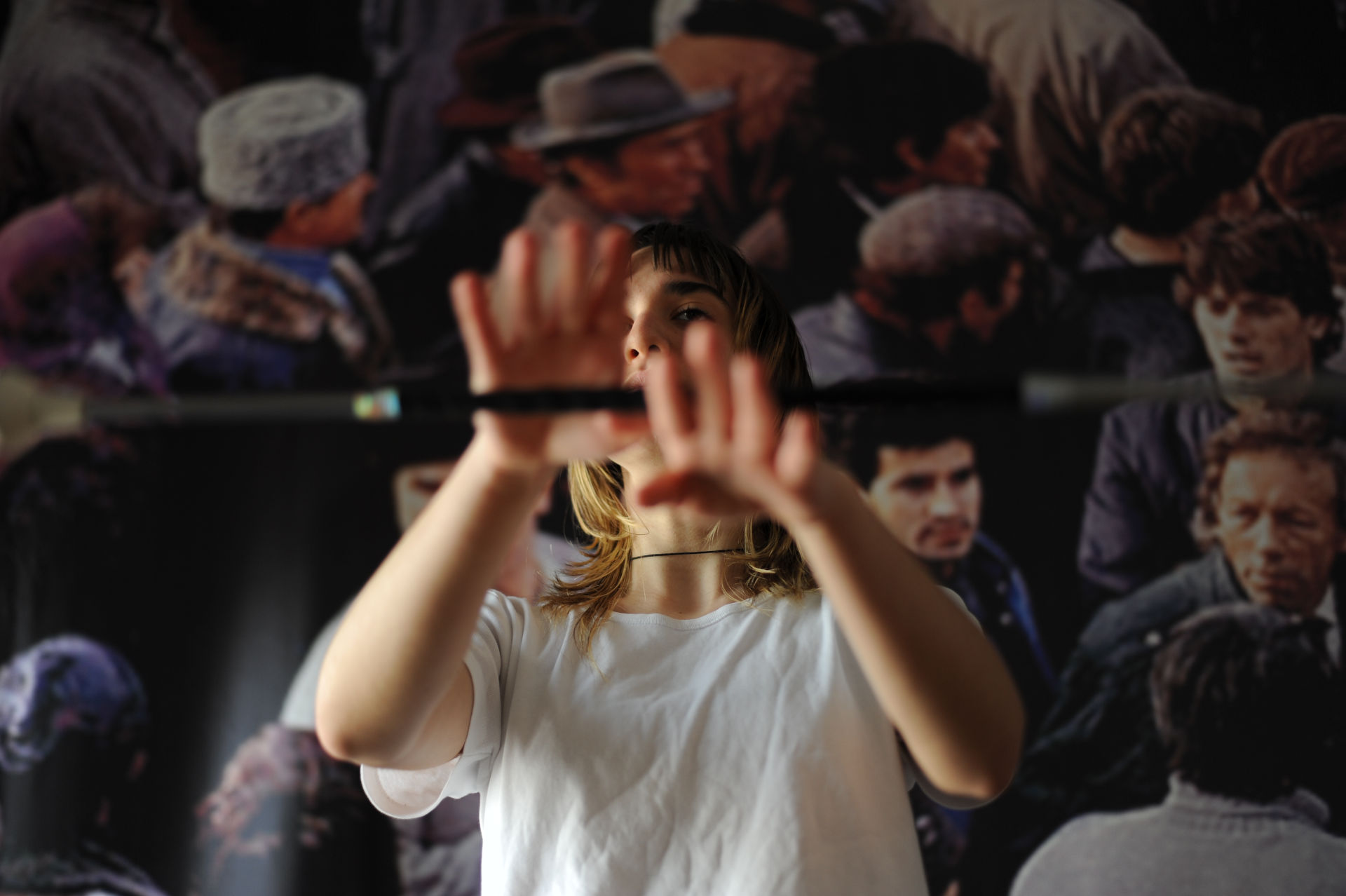A cross-over workshop between perception and imagination in dialog with ancient portraits of the Pinacoteca Arad
Overview / Summary
SELFfree Subject/Aims:
Our ideas of today are our reality of tomorrow. Ideas and imaginations are not easy to grasp at first. If someone asks us, „Who do you want to be? What do you really want? How do you imagine it, concretely?” we are usually overwhelmed and often know more quickly what we don’t want. This can be a starting point, may be enough for minor changes to what already exists, but not for something big, visionary, revolutionary. It is true that the great ideas always arise in the small, hidden, intimate (a tiny thought, a fragment of an image, a feeling in the stomach, a passing scene… ), but at this moment we are already in the middle of a process of creation, which we can easily influence at this point. Here we can and should play, dream, fantasize, be crazy and simply assert things. Then ideas, fantasies, scenarios of tomorrow emerge. We create images, create future selfies for our later selves and perhaps write a new piece of history with them.
Target groups:
selfFREE is aimed at teenagers and young adults who want to explore everyday and unusual artistic paths in order to benefit from them on a personal and professional level. Whether they are 16 or 26 years old, the selfFREE project is aimed at high school and university students alike. The way of approaching the paintings of the Pinacoteca at the beginning of the workshop and the following implementation of the used theater and staging techniques for the genesis of own artworks, take place individually with the participants in the context of their previous personal experiences. This naturally produces a wide variety of results, very personal works of art that portray the respective personalities as selfies at their respective ages. The workshop leaders support the students and enable the university students to gain insights into methods of practical art education in addition to their own self-experience.
Outcomes/Deliverables:
Can we relate our self-image to paintings in the art museum? How does a work of art history relate to our reality today? How does our artwork relate to a possible future reality? Guided by photographer and artist Lili Weiss M.A. and actress and theater pedagogue Karina Paula Kecsek, workshop participants explore how they would like to interpret and overwrite museum representations through their own stories from their own time as well as through an imagined future.
With the help of playful art and theater pedagogical methods, Weiss and Kecsek let the participants immerse themselves in different ways of implementing their ideas. Actively and practically, they experience inner and outer visual worlds and can try out artistic scenarios with simple means of expression. Just as the historical artists once approached their present and depicted people in their real environment, but also brought their utopias and visions to the canvas, we artistically deal with our views in the here and now, but also with our own ego in subjective images of the future.
We take a look at our environment and within ourselves, creating current images of what we perceive, as well as individual visions of what we feel. Of ourselves, of others, of what makes us who we are. Of how we live and would like to live in the future, of who we want to become and be. We set the scene for the future! In doing so, we don’t wield paintbrushes, but our cell phones. With them, we not only create unique photos, but also a new art form: future selfies!
Result in brief:
Promoting a new look at art and gaining the experience that art can be a tool to use decisions independently without being subject to an evaluation system, but to create one’s own and apply it creatively.
Main tools/methods:
In a two-day workshop, the selfFREE project enables an inner confrontation with artistic utopias and visions and at the same time creates art, as both artists leading the workshop, Lili Weiss M.A. and Karina Paula Kecsek, help to implement the creative ideas of the participants. In addition to the (theoretical) examination of Pinacoteca paintings within conversations, the participants concretely relate their self-image to the artworks and explore means for their very own interpretations. We work with our body, our imagination, our voice and of course our feelings.
The workshop is also a safe space for creativity, where we explore together different states, feelings and emotions, from which unique, pure selfies emerge. Using theater pedagogical methods, participants were introduced to techniques that allow them to practically create different ideas for the realization of their thoughts out of their bodies and to generate new images and scenarios within fine art works with the help of emerging movement elements (performance).
Keywords / Hashtags
selfie| selfimage| performance| contemporaryart| futureart| photography
Post-Education Project Connections
- Post-Education
- Education through Art
- Possible Futures
Since the „Post-Education” program deals with new methods of education through the means of art, we are naturally connected to it with our „SELFfree” workshop. We are committed to putting into the hands and hearts of people of all ages a usable way to take self-empowerment for self-education and to cultivate and develop it in their own creative way. As a part of the cultural landscape, we share the hope that sooner or later such dedicated cultural projects will also have an impact on the institutionalized educational systems.
Mediator / Artist Biography
Artistic Vita Lili Weiss M.A.
During her studies in Fine Arts at the Bauhaus University in Weimar, the trained photographer began to work in multimedia. During her Master’s degree in Geneva, she expanded her artistic work to include art in public spaces and other genres, such as theatre. In her freelance work, in addition to photography and painting, she deals with staged spaces and uses the whole range of available media, such as spatial installation and performance. By using a poetic-quoting and metaphorical-philosophical language, she likes to create situations in which viewers are confronted with their perception. With her art figure lilinois, she currently embodies music performances with her own compositions. She has lived and worked in Stuttgart since 2011. There she is, among other things, part of the jury committee of the „Stuttgarter Filmwinter” in the department „Expanded Media and Network Culture” and 1st Chairwoman of the Förderkreis Bildender Künstler Baden-Württemberg, which runs the renowned municipal gallery KUNSTBEZIRK-Stuttgart.
Artistic Vita Karina Paula Kecsek
Born in Timisoara/Romania and raised in German theatres, she first stood on stage herself for many years after studying acting before continuing her studies in cultural work in Potsdam and training as a theatre pedagogue in Heidelberg. This was followed by numerous projects for schools, cultural institutions and theatres in Germany, Romania and Switzerland. She worked for the Grips Theatre in Berlin and was employed as a theatre pedagogue specialising in drama and ballet at the Vorpommern Theatre in Greifswald. In addition to directing and developing plays, she was responsible for regular training for teachers, workshops for educators, workshops at the university and acting workshops in Berlin. From the 2017/2018 season, she was head of theatre education at the Anhaltisches Theater Dessau. There she also worked as a dramaturge and director and called the SCHAU REIN! theatre festival into beeing, which stood for a broad spectrum of aesthetic approaches and artistic disciplines and whose planning, organisation and artistic direction she was responsible for until the end of the 2022 season. She currently works as a lecturer at the adult education centre of the city of Dessau and devotes herself mainly to project management and theatre actions and performances in public spaces.
Target Groups and Participant Persona
15-20 pupils and young adults, aged between 16-26, enrolled in (art or theatre) high schools, or in university of arts, design, theatre (university students) etc.
Goals and Objectives
- This kind of cultural education starts from the very personal and draws from it and shows methods to continue to explore this independently in one’s own individual way and thus to use contemporary artistic strategies for professional purposes on the one hand but also for strengthening and forming one’s own personality. Young people in particular playfully infect each other with shared creative activities.
- Demonstration of different approaches, approaches and possibilities of aesthetic forms and (physical) means of design.
Competencies to Develop in Target Group
- The ability to turn something small or inconspicuous into something very valuable through artistic practice.
- Examination of oneself in relation to art: What actually is art and when are we already in the middle of its creation process? When and how do fantasies, ideas, scenarios and images arise in us? And which skills do we have to realize them?
- An examination and at the same time a retrospective of our future: With the resulting future selfies, the participants carry a note in their cell phones, so to speak, far into their future. The artwork is thus sent there virtually in a time capsule. How will the participants look at their „future shots” in a few months or years?
Duration of Event
2 days;
First day: 09:30 to 16:30, 1 hour break.
Second day: 09:30 to 16:30, only individual breaks.
Activity Steps
Day 1
Locations: Museum Arad, small room (for theoretical part) + Pinacoteca Arad, large room (for practical part)
Sequence of events in the morning:
1. Presentation of the project and our approach
Clarification of the structure/ outlook on the different stages of the workshop (Day 1: Practical and theoretical introduction, body work and perception in concrete space, examination of one’s own identity in spaces of yesterday, today and tomorrow, reflection and collection of ideas for Day 2; Artistic realisation of the „future selfies”, bundling of ideas and results, creation of the selfies, portraits and performances through mobile phone photos, cameras and videos)
2. Viewing the portraits / dealing with the portrayed persons in the picture gallery (individual work)
Take the works out of their historical context and question the sitters, e.g.:
How do you feel, how was your day, were you forced into this painting or was it your own will, what are you thinking right now, are you happy, are you hungry, are you in love, why did you choose these clothes, were you allowed to choose this pose, do you feel comfortable? Does your arm, neck or nape hurt? If so, how would you rather have your portrait taken, where would you like your head to turn or fall, where would your arm want to rest or stretch out, which pose would be good for you, which would be comfortable, or how would you like to show yourself?
3. Introduction to ideas of self-expression, expression and artistic creation skills
a) short joint physical group warm-up.
b) Reference:
Now concretely relate yourselves to the works and the sitter (individual work):
- Get into some poses of the portrayed persons (challenge: do not only choose those that you are comfortable with or that appeal to you, but also those that are foreign to you, that may not mean anything to you)
- Try to feel inside yourself: how does this pose feel, how do I feel in it, does it have something to do with me (maybe quite unexpectedly?), do I enjoy the pose or do I want to change it, where does my body want to go?
- Explore the relationships of the sitters in group work and 1. improvise the respective pose.
- 1. improvise the respective scene spontaneously in a performative way or 2. let your pose be determined by your pose.
- 2. let your partners change your pose like a sculptor, allow this and go along with this change. How does it feel? Then let your pose become fluid and explore where it takes you.
4. Reflexion
How have you been so far, how have you felt?
Answers included:
- unconfortable because of leaving the comfort zone
- inspiring
- relief
- eliberating
- fun
- happy because of leaving the comfort zone
BREAK
Course of the afternoon
1. The Body In Real Space
a) „The Raumlauf Method” (individual and group work)
– Move evenly distributed through the room. Follow the following impulses: walk at your own individual pace, close your mouths, take your hands out of your pockets, concentrate only on walking, notice as much as possible, be open, take your time, do not walk in circles, arrive slowly in the room.
– Now, while walking, draw your attention to the spatial relationships with the other performers in the space and sharpen your antennae to them: Distance, proximity, etc.; now additionally focus on the space, your distance to the walls, the doors, etc., sensually perceive the space and relate your body in its movement to it. Try to feel very consciously where your body ends and the space begins!
b) „The Elbow Method“
– Fluetify the Body! Let your elbow decide where your body wants to move in space. Raise your arm and follow your elbow, don’t think! Let it guide your body, turn it, flow up and down, take up all the space. Switch the elbow! Switch the body part! Also let your butt or your little finger rhythmically guide your body, etc. Add music!
– Try reflecing what you feel with your body movements, dance and flow with your body parts, feel comfortable and have a lot of fun!
2. Short Reflexion
3. The Body In The Spaces Of Yesterday, Today And Tomorrow
– Distinction in:
a) THE REAL SPACE (relating ourself to the paintings, tot he room oft the museum),
b) THE EXPERIENCE SPACE
(past until presence; space of experience; I was in this museum room with my parents/school class etc., now I overwrite this space with f.e. my body movements and dancing),
c) THE FUTURE SPACE (future space; where do I see myself in the future?)
+ Time:
How can we show a passage of time with our bodies (stagnant time, fluent time)? How does time feel like? How do we notice time (body, situations?)
4. Use Body, Space And Experiences For Your Future Selfies and Performances!
– Think about the sentence: „We are not only today’s WE, but also yesterday’s and tomorrow’s.”
– Think about your SPACE OF EXPERIENCE.
– Creating mindmaps in groups, brainstorming (group work):
In 5 small groups, the participants finally draw, write, glue their impressions and experiences of today as well as sketches of their ideas for their artistic realisations tomorrow on large sheets of paper. Goal: Search for creative possibilities of self-dramatisation, creative examination of the self, breaking open spaces, provocation, reflection, storytelling.…
– Homework: Look for keywords for your artistic work / implementation of your ideas today on tomorrow. For this, bring „props” from home, things that were important to you, are important, that you might want to send into the future in (with) your „future selfies”.
Aim of the homework: Based on the associations that have arisen in each individual in the course of the day through the work with the body on the border between „inner space” and „outer space”, the participants should each circle one or two terms (catchwords) through which they feel personally touched and/or represented – from their respective current temporal perspective. From these they develop their project ideas for the next day.
Day 2
Schedule morning to afternoon
1. Theory
Parameter 1: Space And Body (summary of yesterday)
- a) Summary of the methods learnt for developing a theme through performative work with the own body.
- b) Summary of the theoretical substructure, the division into „inner space” and „outer space” as well as the body as a tangible „border” between these two.
Parameter 2: Time (summary of yesterday and continuation)
- Using concrete examples from their own experience, the project leaders show how „inner spaces” have changed over time, and thus „outer spaces” have also experienced a shift in connotation (e.g. church visits once in childhood <-> visits to churches at rock concerts today).
- New connotations and overwriting of places also occur through changes in the time of day (e.g. museum visit with parents <-> overnight stay with a group in the museum).
Task „Thought experiment” (individual work)
- Using your own personal examples, go back in time a few years to your childhood.
- From the perspective of your childhood, remember how you imagined your own future at that time, which now forms the present. What was it like? Find a new comparison!
- Now, in the same way, make a projection into the future in approximately the same period of time.
2. Practice
Creation / artistic realisation of the future selfies (individual and group work)
On the basis of the „information” and „answers” that our bodies provided us with on the previous day, at this point in the workshop the participants have crystallised concepts from which set pieces or entire implementation ideas for their own artistic implementations of the „future selfies” have emerged.
These will now be discussed individually with the participants and examined in terms of a) possibilities of realisation and b) choice of artistic media.
– Division and initiation of organisational work steps, including:
- Who needs what?
- Setting (material, location, interior/ exterior?)
- Personnel help with photography, filming, securing the site/space, as an extra for a particular setting/scenario, etc.
- Who decides for a performance (e.g. open air painting), who for selfies, who wants to be portrayed, who wants to stage scenic mobile phone videos?
- etc.
By trying out various performative, physical means of expression on day 1, the participants were enabled to transform their voices into individual photos and videos with the help of learned processes of abstraction through a clear, artistic form into individual messages. In the practical implementation, they now use different angles and changes of perspective, try out various techniques in different places in and in front of the museum, work both solo and in small groups and are always supported artistically by the workshop leaders as needed.
3. Don´t judge!
During the creative process, the participants are repeatedly reminded not to judge their results, not to evaluate them at first, but to allow an artistic flow. This enabled them to marvel at the end at the abundance and diversity of their aesthetic and performative approaches – amazing results emerged!
Deliverables
Tangible and visible results of the selfFREE project are the selfies and related artworks created during the two workshop days. Each participant creates individual selfies, videos and photos, and also defines the setting, lighting, atmosphere and vision that will serve as the basis for his/her future selfie. In this way, they create lasting works of art for their future self.
Technical Highlight
Our main medium is the smartphone with its potential to make digital artworks easily happen. But SLR cameras and video cameras were also used, for example to document a performance.
Experience Peak
We believe that each participant has experienced a different moment during the project that has particularly surprised, confused, amused, amazed, excited, or make him/her think. This is very individual. However, no one was shocked we hope. What we learned from the participants is that many of them were positively suprised by the reward of having quitted the proper comfort zone.
Conclusion and Reflection
Questions that the event addresses and that will explicitly raise and try to answer together with the participants, based on their experience in the event:
- How do we deal with our own potential?
- Can we consciously create reality through our creativity?
- What if I used arts more often to “legitimate” my right to develop and to express myself?
Materials and Resources
- Mini studio: various small/some bigger spots/photo lamps (+ colored filters, one honeycomb filter), e.g. for setting up still lifes, portraits, etc. (for mood creation).
- DIN A 3 sheets (number depends on number of participants), colored pencils, colored sharpie pens, pens and pencils for the creative brainstorming/ fixing ideas.
- Each participant has his cell phone/smartphone with him and WLAN should be available. Each participant is very welcome to bring his/her own laptop + cable to the cell phone if he/she wishes.
- PC for saving the results, cable, hard disk.
- SLR camera/ video camera for further possibilities (f. ex. documentation of a performance, which can also represent a selfie).
Monitoring and Feedback
- Orientation for the participants through clear work assignments and work settings;
- Clarity and freedom in the process of artistic discovery;
- Reduction of inhibitions (protected space!);
- Encouragement to think and create new ways in art;
- Invitation to self-empowerment and confirmation to trust oneself ;
- At all necessary points, reflection with the groups about what has gone on so far, how they feel, what experiences they have had so far, where their difficulties lie or what may still be unclear;
- In addition, constant assistance for individual participants who specifically request it.
Bibliography
Some books, which inspired us:
– Wolfgang Ullrich, SELFIES, Digitale Bildkulturen, Verlag Klaus Wagenbach Berlin, 2.Auflage 2019.
– Julian Rosefeldt, Manifesto (Publication on the occasion of the exhibition), Koenig Books London, ISBN 978-3-86335-856-3 (English).
– Marina Abramović, The Cleaner (Publication on the occasion of the exhibition), Hatje Cantz Verlag Berlin, ISBN 978-3-7757-4261-0 (English).
